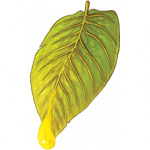 Floridians have been bombarded with press coverage of Amendment 2. Yet, for all the noise, there are important aspects of this discussion that have barely been touched upon, including the beginning of the medical-marijuana movement. How many Floridians are aware that a native son of the Sunshine State is the father of this movement? His name was Robert C. Randall — my late husband.
Floridians have been bombarded with press coverage of Amendment 2. Yet, for all the noise, there are important aspects of this discussion that have barely been touched upon, including the beginning of the medical-marijuana movement. How many Floridians are aware that a native son of the Sunshine State is the father of this movement? His name was Robert C. Randall — my late husband.
Robert was born and raised in Sarasota. He was diagnosed with glaucoma at a young age. In the early 1970s, he accidentally discovered that his vision improved when he used cannabis. In those days, not many people knew about the medical uses of cannabis. We were convinced Robert had made a singular discovery. Imagine our surprise when, just a few weeks after our arrest in August 1975, we obtained a document from the National Institute on Drug Abuse titled “Marihuana[sic] and Health.” It was an annual report that was sent to Congress, and inside we found a small section called “Therapeutic Uses.” Glaucoma was prominently featured.
We decided to fight the misdemeanor charges against us, even though doing so was risky and expensive. Paying a fine would make the charges go away, but Robert’s glaucoma would remain.
We set out on a journey that became a lifetime. We began by securing legal access for Robert through a dual process of fighting the criminal charges and administratively petitioning for permission to legally use federal supplies of marijuana. Both actions were successful. Robert was found not guilty by reason of medical necessity. He began receiving federal supplies of marijuana in November 1976. He became “One in 213 million” — the only individual allowed to use marijuana medically. And he began to speak out about marijuana’s medical utility to whoever would listen, and plenty of people did.
For the next 20 years, we did everything we could to remove the federal prohibitions against marijuana’s medical use. We were remarkably successful. Between 1977 and 1980, working with patients in other states, we helped enact 34 state laws that recognized marijuana’s medical utility. (Florida was among the first states.) These laws ultimately fell into disuse after federal authorities released synthetic delta-9 tetrahydrocannabinol, now marketed as Marinol.
But the movement was only slowed, not stopped. In the late 1980s, we convinced the chief administrative law judge of the Drug Enforcement Administration that marijuana has accepted medical use. His ruling was overturned by the administrator of the DEA. In the 1990s, we created a program called Marijuana AIDS Research Service and helped hundreds of AIDS patients, with the cooperation of their local doctors, apply for permission to medically use federal supplies of cannabis.
The federal government’s response was brutal, shutting down the only program in the country that allowed patients to use cannabis, the so-called compassionate-use program that was created in 1978.
It was this action that led to passage of the nation’s first ballot initiative in 1996. Citizens in California, frustrated by federal intransigence and maliciousness, took it upon themselves to help the seriously ill of their state. California voters overwhelmingly enacted Proposition 215. The federal agencies watched helplessly as state after state passed medical-marijuana laws. The DEA tried to shut things down, but it was too late. Too many people knew the truth: Cannabis has medical value. It is confirmed in history dating back 5,000 years and in modern research that is exploding in volume.
Today, 23 states and the District of Columbia have legalized cannabis for medical use. Ten states, including Florida, allow the use of one cannabis ingredient, cannabidiol, derived from strains such as Charlotte’s Web or Mary’s Healing Heart.
On Tuesday, Floridians will have the opportunity to expand legal access to the whole of the cannabis plant. I encourage them to do so as much for the future potential of this drug as for its current use by patients with multiple sclerosis, auto-immune disorders, chronic pain and other ailments. Free this plant of the stigma that has stymied our efforts to learn about its vast resources. Just say know.
